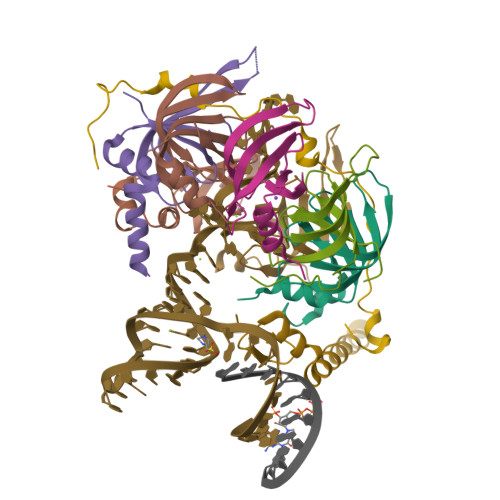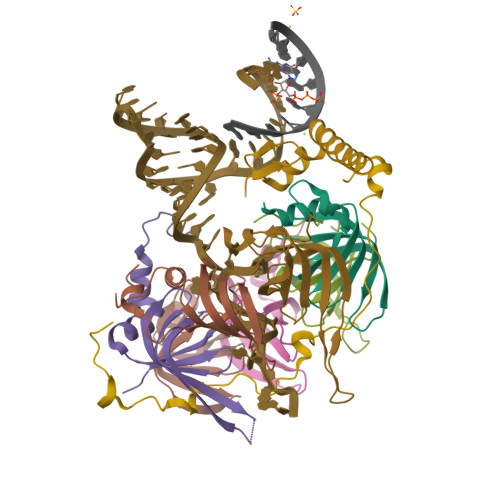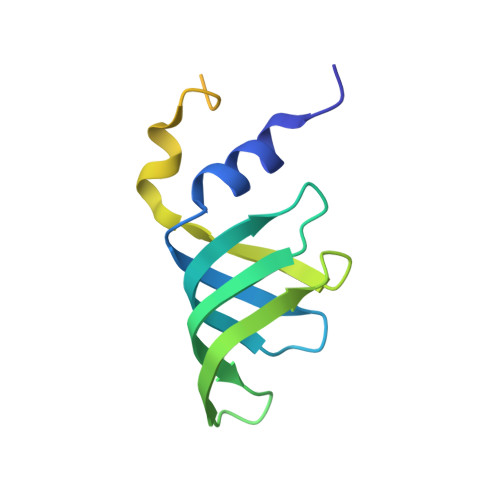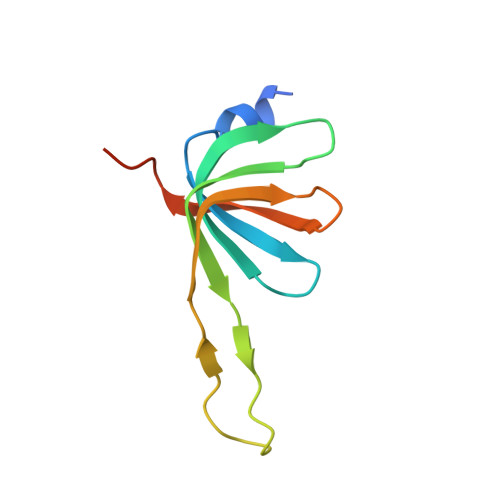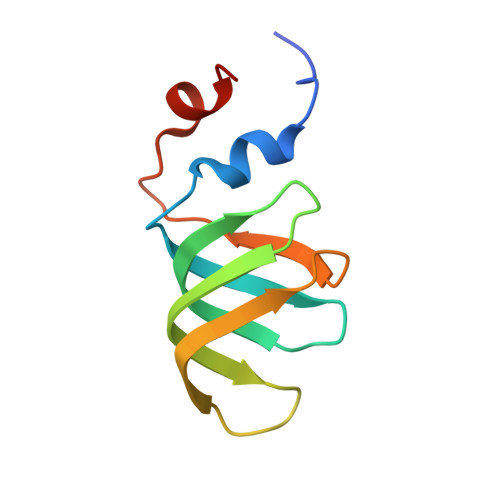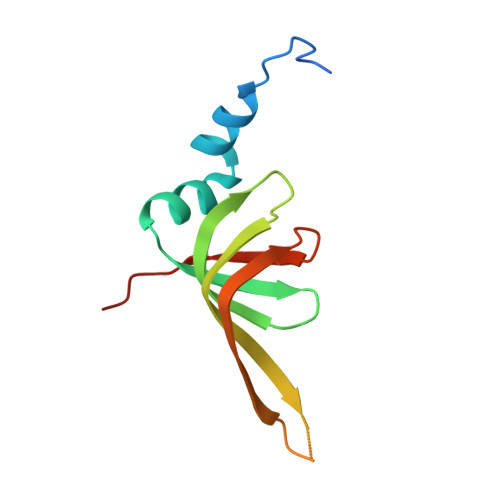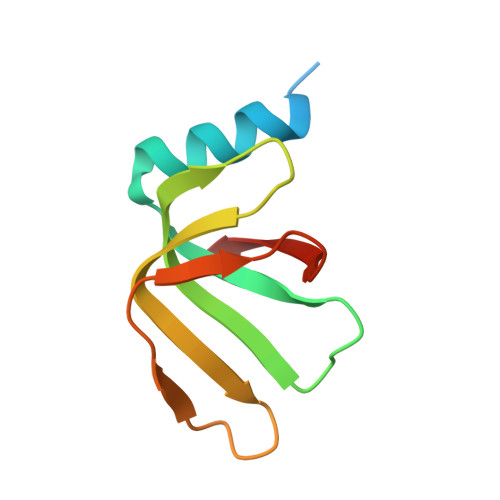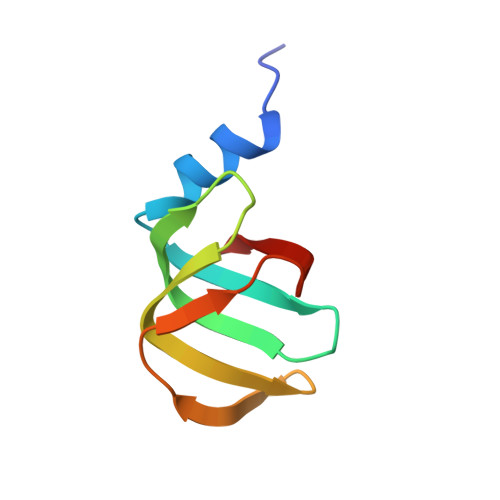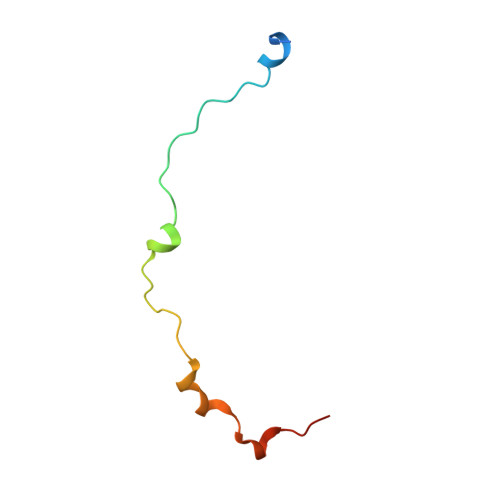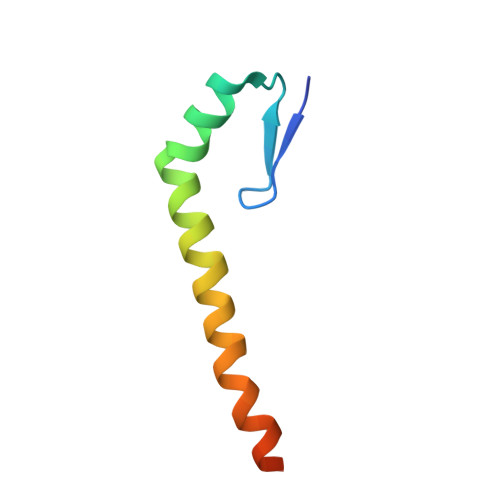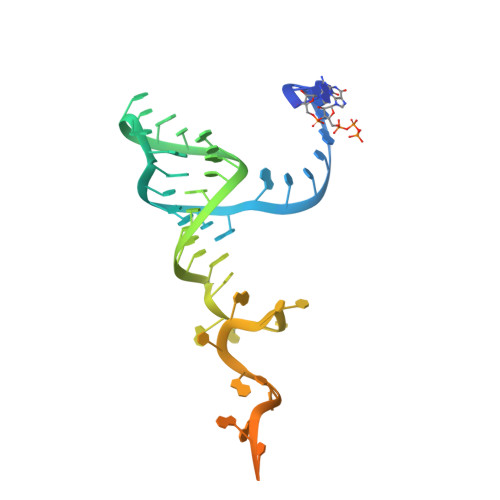Crystal structure of human U1 snRNP, a small nuclear ribonucleoprotein particle, reveals the mechanism of 5' splice site recognition.
Kondo, Y., Oubridge, C., van Roon, A.M., Nagai, K.(2015) Elife 4
- PubMed: 25555158
- DOI: https://doi.org/10.7554/eLife.04986
- Primary Citation of Related Structures:
4PJO, 4PKD - PubMed Abstract:
U1 snRNP binds to the 5' exon-intron junction of pre-mRNA and thus plays a crucial role at an early stage of pre-mRNA splicing. We present two crystal structures of engineered U1 sub-structures, which together reveal at atomic resolution an almost complete network of protein-protein and RNA-protein interactions within U1 snRNP, and show how the 5' splice site of pre-mRNA is recognised by U1 snRNP. The zinc-finger of U1-C interacts with the duplex between pre-mRNA and the 5'-end of U1 snRNA. The binding of the RNA duplex is stabilized by hydrogen bonds and electrostatic interactions between U1-C and the RNA backbone around the splice junction but U1-C makes no base-specific contacts with pre-mRNA. The structure, together with RNA binding assays, shows that the selection of 5'-splice site nucleotides by U1 snRNP is achieved predominantly through basepairing with U1 snRNA whilst U1-C fine-tunes relative affinities of mismatched 5'-splice sites.
Organizational Affiliation:
Structural Studies Division, MRC Laboratory of Molecular Biology, Cambridge, United Kingdom.










